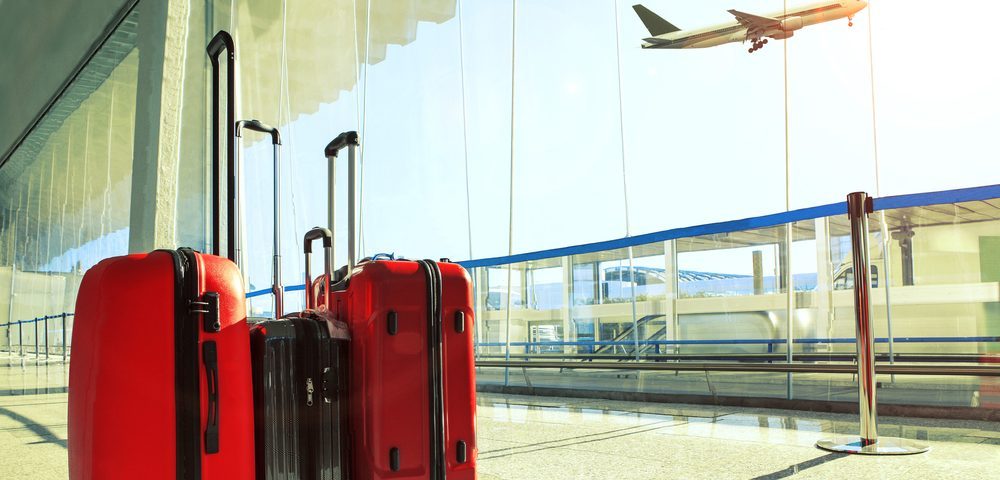3 Things I’ve Learned About Traveling with Ankylosing Spondylitis
Written by |

Travel is particularly brutal when I’m in a flare-up. When I’m feeling OK, it’s still hard but more manageable.
With a partner whose family lives in Brazil and the U.K., I go to Europe at least once per year. I travel pretty frequently within the States as well.
The ability to travel is a privilege. Last-minute deals, buying tickets well ahead of time, and having a free place to stay have made it exponentially more affordable.
That said, travel is fun and wonderful — except when it’s not. I know that plenty of people living with ankylosing spondylitis (AS), for example, have serious accessibility issues. Call airports and train stations ahead of time to ask about how to book wheelchairs, motorized escorts, or accessible seating.
While I can stand and walk very easily, there’s a limit. Here are a few things I learned about traveling:
Prioritize your needs
I get exhausted very easily, and my pain levels soar through the roof when I’m sitting on a bus, plane, or train. The plane is usually the worst with long flights, cramped spaces, and at times being stuck in your seat. I used to worry that I’d be a weirdo if I got up to stretch every half-hour. Will people think I’m being ridiculous? Annoying? What if I don’t have the aisle seat?
I started telling the flight attendant and those sitting next to me that I’d be getting up a lot during the flight to stretch. People often will swap seats with me, but there are people who don’t care. Just ask the flight attendant for help and explain your condition.
Oh, and get up. Stretch and then stretch some more. Go to the back of the plane, near the bathrooms, if you need it. On longer, larger trans-Atlantic flights there are usually wider aisles, which make stretching easy. I even found an empty row and got right down on the floor to stretch.
My point? Don’t be embarrassed. They will never see you again and your pain levels will only escalate if you’re not careful.
What about avoiding long lines while waiting to board a plane, for example? Over at Spondylitis Association of America, Charis Hill wrote:
“If standing and walking cause significant pain and fatigue, you can request to be pushed in a wheelchair from the check-in counter directly to your gate and in between gates. This is a complementary service for those who need it. If you use your own wheelchair or other assistive device, or if standing in line causes your symptoms to worsen, you can take this TSA card to the front of the security checkpoint line. Be prepared to state that you have a disability and cannot stand very long. You have the right to go through security faster to reduce strain on your body.”
Communicate
Let your travel companions know your limitations. Speak up if you need to sit for a while. If you need someone to stay with you, ask. You may need to let them finish the day’s itinerary without you. It can be hard to do, asking for help. It can be vulnerable, frustrating, isolating, and all of that good stuff, but it’s just what you need!
Plan ahead
A little planning can go a long way. I’m a seat-of-my-pants kinda gal. I like the mystery of travel and generally loathe planning, Excel spreadsheets, and timing a trip to the half-hour. If you say, “I reserved a 5:30 slot for dining,” I will not be happy.
Travel, to me, is about wandering, exploring, and discovery. Traveling while you’re in a flare-up is going to take some finessing. I recommend making sure that you make a list of high-priority places, neighborhoods, or landmarks you’d like to see while your energy is high. Let your energy level lead you, with small breaks to wander in between.
You will see what you want to see while you can, and you won’t risk missing anything when ankylosing’s very sneaky fatigue sets in.
Happy travels!
***
Note: Ankylosing Spondylitis News is strictly a news and information website about the disease. It does not provide medical advice, diagnosis, or treatment. This content is not intended to be a substitute for professional medical advice, diagnosis, or treatment. Always seek the advice of your physician or other qualified health provider with any questions you may have regarding a medical condition. Never disregard professional medical advice or delay in seeking it because of something you have read on this website. The opinions expressed in this column are not those of Ankylosing Spondylitis News, or its parent company, Bionews Services, and are intended to spark discussion about issues pertaining to ankylosing spondylitis.






Debbi
Thank you, Lisa Marie! One thing we often forget to give ourselves is permission for self-care. And thanks, also, for the information about airline travel. Big help!